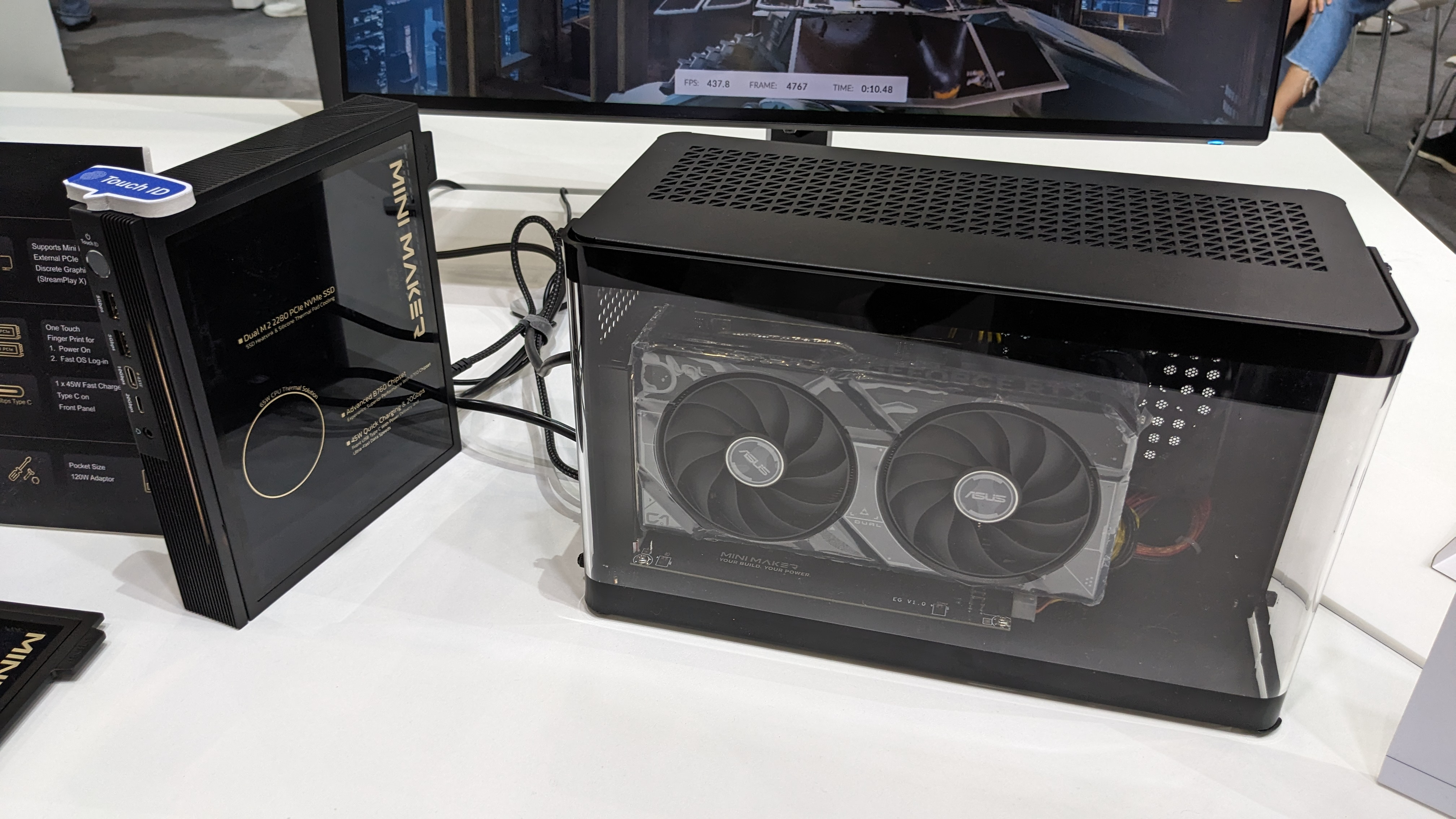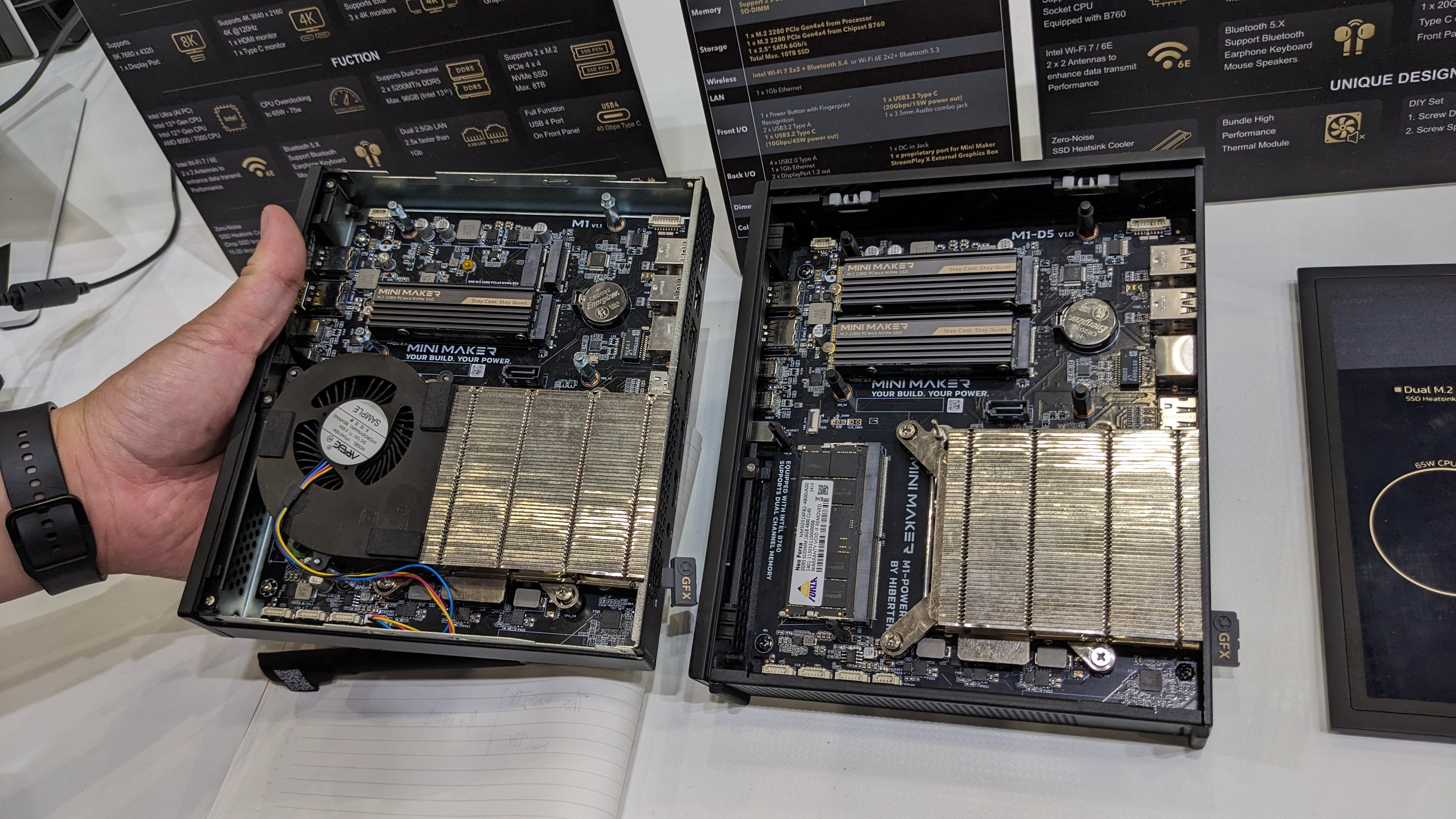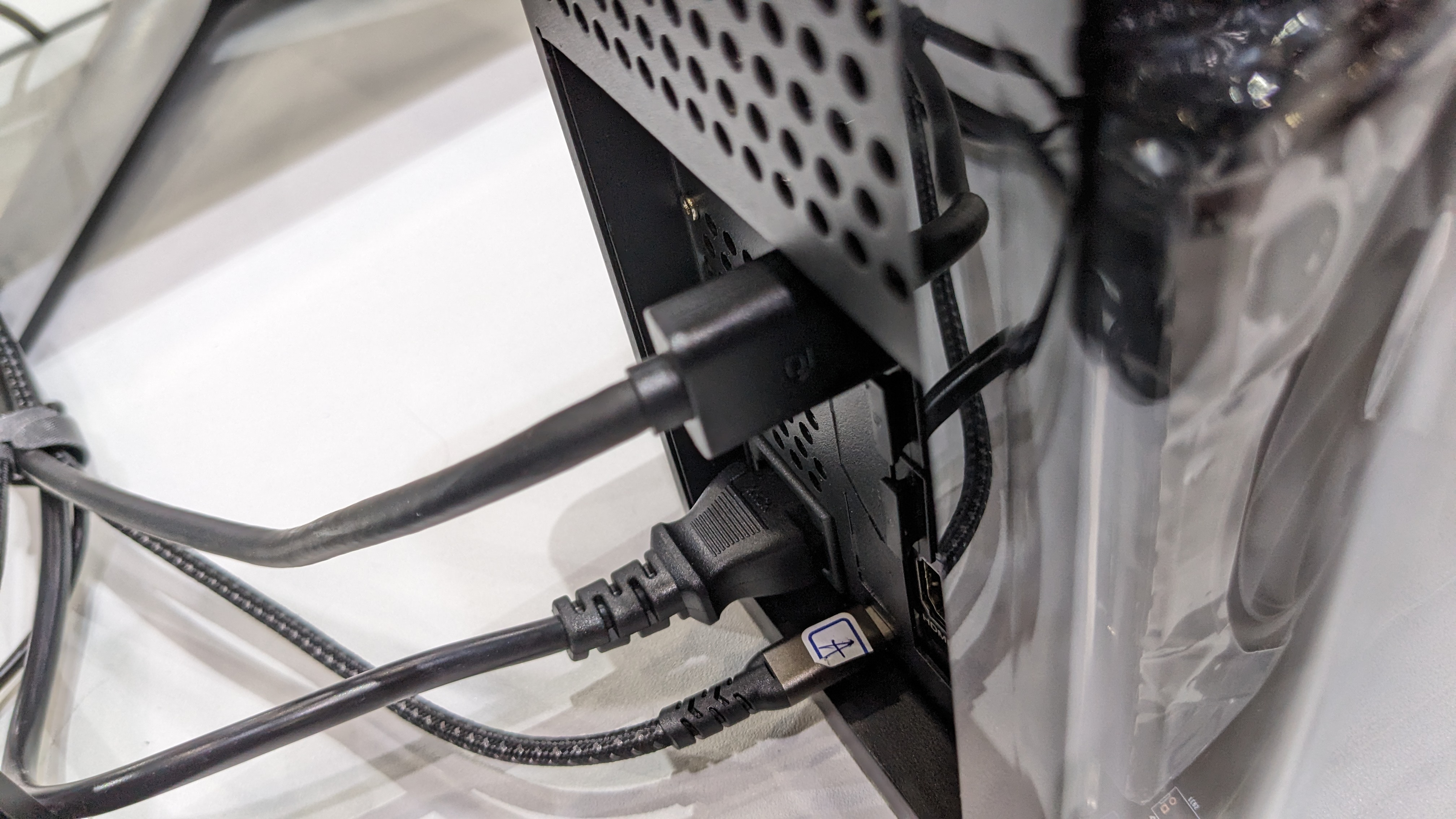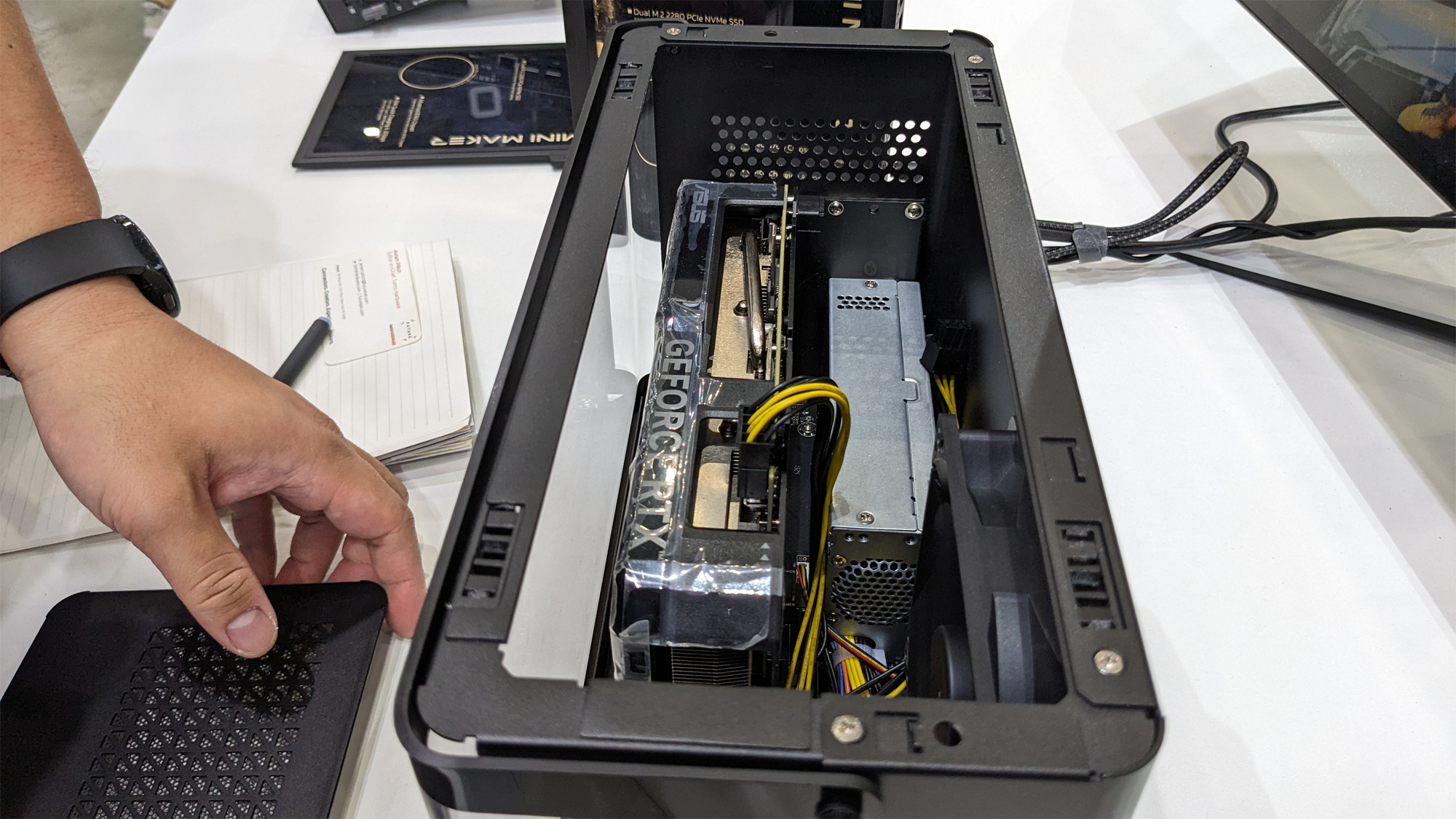
Mini PCs, the class of desktops that fit in really tiny cases, have a following among PC enthusiasts thanks to Intel's (now Asus's) NUC line. But because of their size and modest thermal budgets, most mini PCs have two severe limitations: they rely on performance-limited mobile CPUs and they usually are stuck with integrated graphics.
Enter Mini Maker's Turbo Mini X. This mini PC Is a mere 1.4 liters or 214.6 x 36.3 x 180mm, which is way smaller than even the best mini ITX cases, which usually are around 14 liters. Even an ROG NUC is much larger at 270 x 180 x 50 mm or 2.5 liters. Its 125W power brick is really tiny too.
And yet, despite its diminutive size, the Turbo Mini X can support a 65-watt desktop processor and uses a proprietary cable to connect to an external GPU so it can achieve higher speeds than if it had a standard Thunderbolt cable.
I had a chance to see the Turbo Mini X at Mini Maker's Computex 2024 booth and came away impressed with its design and potential performance. The Turbo Mini X comes with a tiny, non-standard B760 motherboard inside of its chassis. To get inside, you simply pop off the translucent side panel and you have access to the LGA 1700 socket, dual SODIMM slots and dual M.2 2280 SSD ports.

You can use any Raptor Lake or Raptor Lake Refresh chip that consumes 65 watts, a Core i5-1440 or Core i7-1470 for example. A passive heat sink covers the chip and a blower fan sits next to the sink and above the SODIMM slots. The kit doesn't come with an SSD (or the RAM or CPU) but it does come with a heatsink you can use with your SSD to keep it cool.
When it comes out the Mini Maker will have versions that support DDR4 SODIMMs and others that support DDR5. There will be a SKU that has built-in Wi-Fi 7 and another that tops out at Wi-Fi 6E.
The Turbo Mini X is loaded with ports, including a 10 Gbps USB-C port that can output 45 watts for charging, a 20 Gbps USB-C port and 5 USB Type-A ports. But what's most interesting is a proprietary port that connects to the Mini Maker StreamPlay X External Graphics Box, which is sold separately. The port uses USB-C, but according to Mini Maker, it enables a direct PCIe connection which is faster than what you get when using Thunderbolt 4 to connect a laptop to an after-market eGPU like the Razer Core X.
A Mini Maker rep said that he saw a performance delta of just 5 percent between using the company's PCIe connection to its graphics box and using a standard desktop PC with the same graphics card plugged directly into its motherboard. By comparison, he posited, a Thunderbolt eGPU could be 30 percent slower than a native GPU installation.
To connect to the StreamPlay X, you'll need Mini Maker's custom cable, which is about 40 cm (15 inches long). The cable we saw that Mini Maker's booth had USB-C on both sides, making it look identical to any other USB-C cable.

The StreamPlay X is a remarkably compact eGPU, but an attractive one. It allows you to see your card through a wrap-around plastic window and it has a case fan to help cool your graphics card. The device is available with different power supply capacities: 250, 350 or 400 watts.
At the upper end of this power envelope, you could probably run an RTX 4080. You'd probably need an adapter as there are two 8-pin connectors, but no 16-pin. The top, which has some air holes, easily pops off to allow you to install your card.

Mini Maker is a very new brand whose parent company is Hibertek, a Taiwanese OEM that builds B2B systems. Company reps said that they are trying to find a partner in the U.S. to sell the Turbo Mini X and its other mini PCs. The products may carry any future partners' brand name or they could be labeled as Mini Maker. At present, the system is set to come out in mainland China and Taiwan.
Since the company is still organizing its release strategy, exact pricing isn't available. However, a company rep said that the Turbo Mini X could cost $150 or less and so could the StreamPlay X, making the entire package just $300. That sounds unrealistically low and perhaps reflects wholesale pricing. These days, to get an eGPU by itself costs at least $300. It almost goes without saying that you'll need to bring your own GPU, CPU, RAM and SSD.
But even at a much higher price, the Turbo Mini X and Streamplay X could be a very compelling combination. Users with limited desk space or those who just like the idea of a tiny desktop could get a lot of performance and flexibility with a very small footprint.







